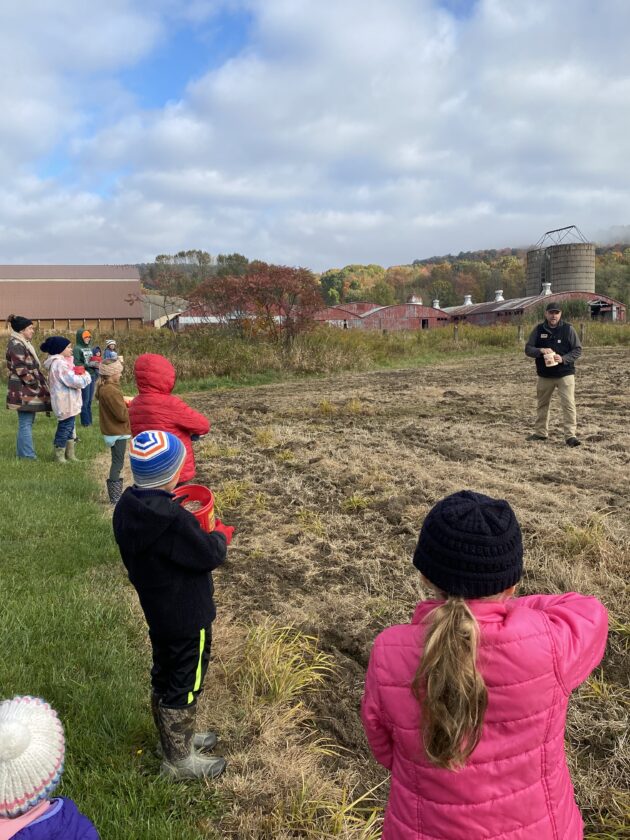Collaboration plants field for pollinators

The DCNR, Warren County Conservation District, and area homeschoolers spent Thursday morning planting native pollinator-friendly wildflower seeds in the two-and-a-half-acre field at the Hatch Run Conservation Building. Pictured are some on the participants.
- The DCNR, Warren County Conservation District, and area homeschoolers spent Thursday morning planting native pollinator-friendly wildflower seeds in the two-and-a-half-acre field at the Hatch Run Conservation Building. Pictured are some on the participants.
- McKenna Quiggle, an 8-year-old home-schooled student from Warren, is pictured trying out the educational pollinator “cootie-catcher.”
While the change won’t immediately be visible to the public, Service Forester Taylor Chamberlain of the DCNR explained that the process had been in the works for a couple of years before today’s planting.
“This field was a lawn and hayfield with non-native grasses, and it did not have much benefit,” said Chamberlain. “Transforming the field into a wildflower meadow with native species will benefit the community garden beside the field, and attracting pollinators to the area is important for conservation and agriculture.”
The First Energy Green Team is composed of company employees who volunteer their time and talents to support various environmental initiatives. They provided the seed for planting the field at the Hatch Run Conservation Building.
Homeschooled students from the Warren and Corry areas were able to learn about pollinators in the conservation district’s Education Center before heading outside to spread the native seed across the over two acres.

The students learned about pollinators, why they are so important, and what can be done to help foster the pollinator population. In addition to simply pollinating plants, pollinators are essential for functioning ecosystems and maintaining the diversity of our natural ecosystems–healthy pollinator populations to ensure that the next generation of plants will be produced.
Eighty percent of non-agricultural plants that benefit from animal-mediated pollination are the foundation of the Earth’s food chains. The leaves, fruit, and nuts that plants make are eaten by herbivores, which predators hunt. Furthermore, these plants provide shelter and nesting habitat for many animal species.
“The students here today will be able to watch how the field progresses, it will be special for them to see their efforts making a difference,” said Chamberlain.

McKenna Quiggle, an 8-year-old home-schooled student from Warren, is pictured trying out the educational pollinator “cootie-catcher.”






